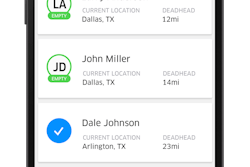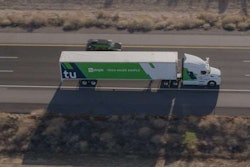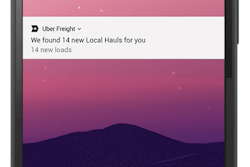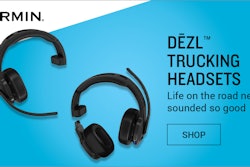After Uber made a case last month for the future of trucking as an industry with a plethora of local-trucking employment but fewer and fewer long-haul opportunities displaced by autonomous trucks, Uber ATG product lead Alden Woodrow confirmed that the company’s self-driving-tech efforts are “focused on a system to take the driver out of the vehicle” on freeway/controlled-entry-and-exit lanes, building for Level 4 autonomy rather than a Level 3 intermediate step upon full commercial deployment.
“We want to try to get this [self-driving truck] technology into the world safely and reliably as soon as we can,” Woodrow said. “Getting a truck onto the highway may be the fastest way to do that.” The company is “not building a truck that can back into a dock.” Highway driving will “likely to be our focus for a very long time.”
Uber ATG, the self-driving-tech side of Uber’s business, is moving freight with at least one carrier and shipper partner each (company reps declined to disclose just whom) across Arizona in ongoing tests of their autonomous technology and a transfer-hub trailer hand-off system the company envisions being “what trucking and freight could be” primarily in the future, Woodrow said.
For now, drivers remain at the controls of the autonomous rigs hauling on I-40 in Arizona, Woodrow said, and Uber Freight product manager Eric Berdinis described the hand-off of loads at either end, transfer points for the autonomous unit’s load to another tractor occurring at Arizona Department of Transportation facilities. The companies shared a promotional video documenting one such transfer at the Topock, Ariz., scale, with an Uber Freight-contracted carrier moving the eastbound load the remainder of the way across Southern California toward its destination.
In Arizona, “we’re not operating trucks continuously” yet, Woodrow added, but with Uber Freight helping coordinate loads coming from east and west the company is building toward demonstration of a transfer system that could work for “high utilization. Our carriers partners and their drivers can also get high utilization in short-haul operations from transfer hubs” on either end. … We have a lot more work to do to get to a real product … before we can take a driver out of the vehicle” on the self-driving leg of the trip. “All of these trucks still have a CDL operator in the driver’s seat at all times.”
Woodrow declined to say whether Uber was planning to market its autonomous technology to existing fleets via the truck OEs or simply deploy it in its own fleet. He did say, however, that “our desire is to partner with the industry all the way up and down the value chain.”









